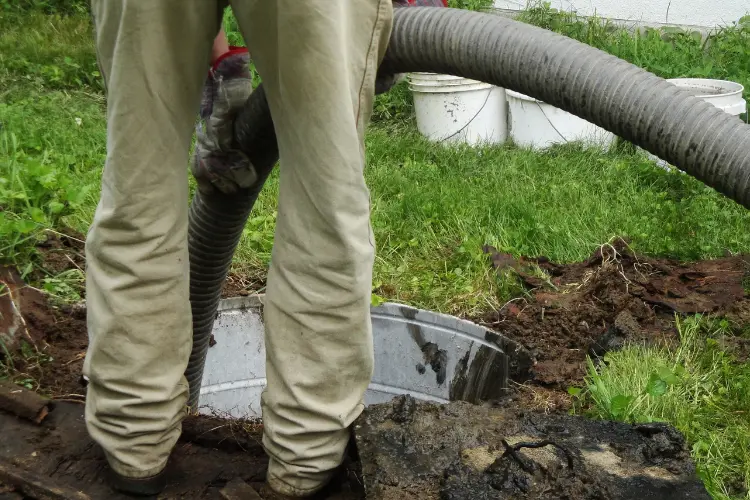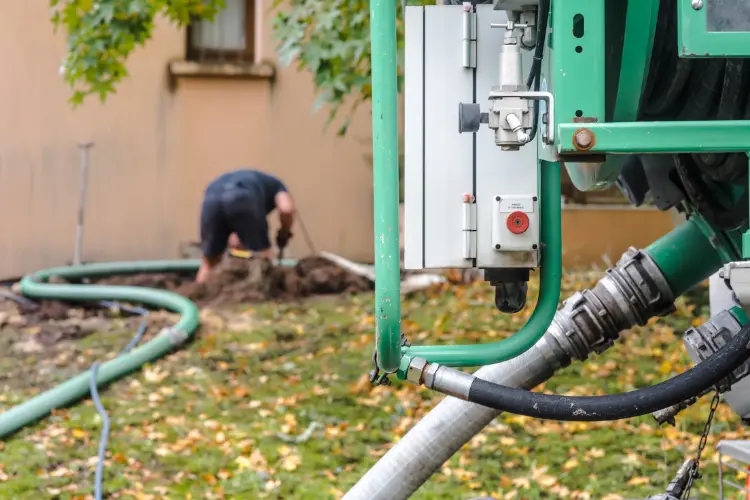Natural Septic Tank Treatment: Eco-Friendly Solutions for Your Home

Many homeowners struggle with finding the right natural septic tank treatment to care for their septic systems. Traditional chemical treatments can harm the environment and upset the natural processes that keep septic tanks working properly.
So how to maintain a septic system effectively without causing environmental damage or risking system health? There’s a growing need for simple, eco-friendly solutions that keep septic systems running smoothly without the negative side effects of harsh chemicals.
Types of Natural Septic Tank Treatments
Bacterial and Enzyme Additives
These are the most common natural septic tank treatments, consisting of bacteria and enzymes specifically chosen to enhance the breakdown of organic waste materials in the septic tank. They help in digesting fats, oils, grease, and solid waste, thus improving the efficiency of the septic system.
These additives introduce specific strains of beneficial bacteria into the septic tank. These bacteria enhance the natural population already present in the system, helping to break down solids more efficiently.
Yeast Additives
Yeast is another natural septic tank treatment that can help maintain the septic system. When added to a septic tank, yeast begins to break down starches, which are part of the solid waste in the tank.
This action can complement the work of bacteria and enzymes, aiding in the overall digestion process. However, it’s important to use yeast treatments sparingly as they can alter the balance of the septic ecosystem if overused.
Plant-based Treatments
Some natural septic tank treatments involve using plant roots to help absorb excess water and nutrients from the septic field, promoting the natural filtration process. Fast-growing plants with deep root systems are typically recommended, but it’s crucial to choose species that won’t damage the septic system with their roots.
Aeration Techniques
Introducing oxygen into the septic system can encourage the growth of aerobic bacteria, which break down waste more efficiently than anaerobic bacteria. This can be achieved through manual aeration or by using aeration devices designed for septic systems.
Composting Additives
Some natural septic tank treatments focus on turning solid waste into compost, using microorganisms to accelerate the decomposition process. This approach is more about waste treatment within the tank, reducing the need for pumping and maintenance.
Molasses or Sugar Treatments
These treatments rely on adding simple sugars to the septic system, which feed beneficial bacteria and help them proliferate. This, in turn, can enhance the breakdown of organic wastes.
Water Conservation Practices
While not a treatment per se, using water efficiently and reducing the amount of water that enters the septic system can greatly improve its performance and longevity. This involves fixing leaks, using water-saving fixtures, and avoiding excessive water use.
DIY Natural Septic Tank Treatments

Creating your own natural septic tank treatments can be an eco-friendly and cost-effective way to maintain your septic system.
Here are some DIY approaches you can consider, focusing on promoting the health and efficiency of your septic system’s biological processes:
1. Yeast Treatment
- How It Works: Yeast helps in the breakdown of starches in the septic system, which can be a complement to the natural bacterial breakdown of waste. It’s a mild treatment that can aid in maintaining the system but should be used sparingly to avoid disrupting the balance.
- DIY Method: Flush a packet of active dry yeast down the toilet once every few months. This introduces yeast directly into the septic system.
2. Molasses Treatment
- How It Works: Blackstrap molasses provides a rich source of carbon, feeding beneficial bacteria in the septic tank and promoting their growth. This enhances the breakdown of waste materials.
- DIY Method: Mix one cup of unsulphured blackstrap molasses with a gallon of warm water until fully dissolved, then flush the mixture down the toilet. This can be done every few months.
3. Baking Soda Treatment
- How It Works: Baking soda can help maintain a neutral pH level in your septic tank, creating an optimal environment for bacteria to digest waste efficiently. It can also help reduce odors.
- DIY Method: Dissolve 1 cup of baking soda in a gallon of warm water and flush it down the toilet. This treatment can be applied once a month.
4. Vinegar and Baking Soda Treatment
- How It Works: This combination can clean and deodorize pipes without harming the bacterial balance in your septic tank. Baking soda neutralizes odors and vinegar breaks down organic deposits.
- DIY Method: Pour 1 cup of baking soda followed by 1 cup of white vinegar down your drains. Let it fizz for several minutes before flushing with boiling water. Use this treatment sparingly to avoid disrupting the pH balance in the tank.
5. High-fiber Waste Treatment
- How It Works: Adding high-fiber organic waste to your septic system can stimulate bacterial activity as fiber is harder to break down and requires more bacterial action, thus encouraging a healthy and active bacterial ecosystem.
- DIY Method: Occasionally flushing small amounts of organic, high-fiber material (like oatmeal or pumpkin) can be beneficial. However, this should be done very sparingly to avoid clogging and is generally less common than other treatments.
Read also: Septic Tank Alarm System: What Those Sounds Mean for Poultry Owners
Benefits of Using Natural Septic Tank Treatments

1. Environmental Friendliness
Natural septic tank treatments are biodegradable and non-toxic, reducing the risk of environmental contamination. Unlike chemical treatments that can leach into the ground and potentially harm water sources, wildlife, and plant life, natural treatments support eco-friendly practices.
2. Safety for Plumbing and Septic Systems
Chemical cleaners and treatments can corrode pipes and damage the materials of your septic system over time. Natural treatments are gentler on your system’s components, prolonging their lifespan and maintaining structural integrity.
3. Supports the Biological Balance
Septic systems rely on a delicate balance of bacteria and enzymes to break down waste. Natural septic tank treatment enhances this biological process without introducing harsh chemicals that can disrupt the microbial ecosystem, ensuring efficient waste decomposition.
4. Cost-Effectiveness
Many natural treatments can be made from household ingredients or are generally less expensive than their chemical counterparts. This cost-effectiveness, combined with their gentle nature, means they can be used more regularly without straining your budget.
5. Reduced Risk of System Failure
By avoiding harsh chemicals, there’s a lower risk of upsetting the bacterial balance that is crucial for your septic system’s functionality. This can reduce the likelihood of system failures, such as clogs or backups, which are expensive and inconvenient to repair.
6. Odor Reduction
Natural treatments can effectively minimize odors by promoting a healthy breakdown of waste. This is not only pleasant for homeowners but also indicates a well-functioning septic system.
7. Long-Term Efficiency and Health
Regular use of natural treatments can contribute to the long-term health and efficiency of your septic system. By maintaining an optimal environment for waste breakdown, these treatments help prevent build-ups, blockages, and the need for frequent pump-outs.
8. Public Health Benefits
Properly maintained septic systems reduce the risk of sewage leakage and groundwater contamination. Using natural treatments contributes to public health by ensuring that harmful pathogens and pollutants are minimized, protecting communities and ecosystems.
Conclusion
Turning to natural septic tank treatments offers a straightforward and responsible way to care for our septic systems while also protecting the environment. These eco-friendly options allow us to maintain our homes efficiently without sacrificing the health of our planet. By choosing natural treatments, we not only keep our septic systems running smoothly but also contribute to a cleaner, safer world. It’s a simple choice that makes a big difference for our homes and the environment alike.
As we strive for a cleaner and safer environment, consider exploring septic tank problem solution products tailored to meet these needs.
By making this simple yet impactful choice, we can all contribute to a sustainable future



